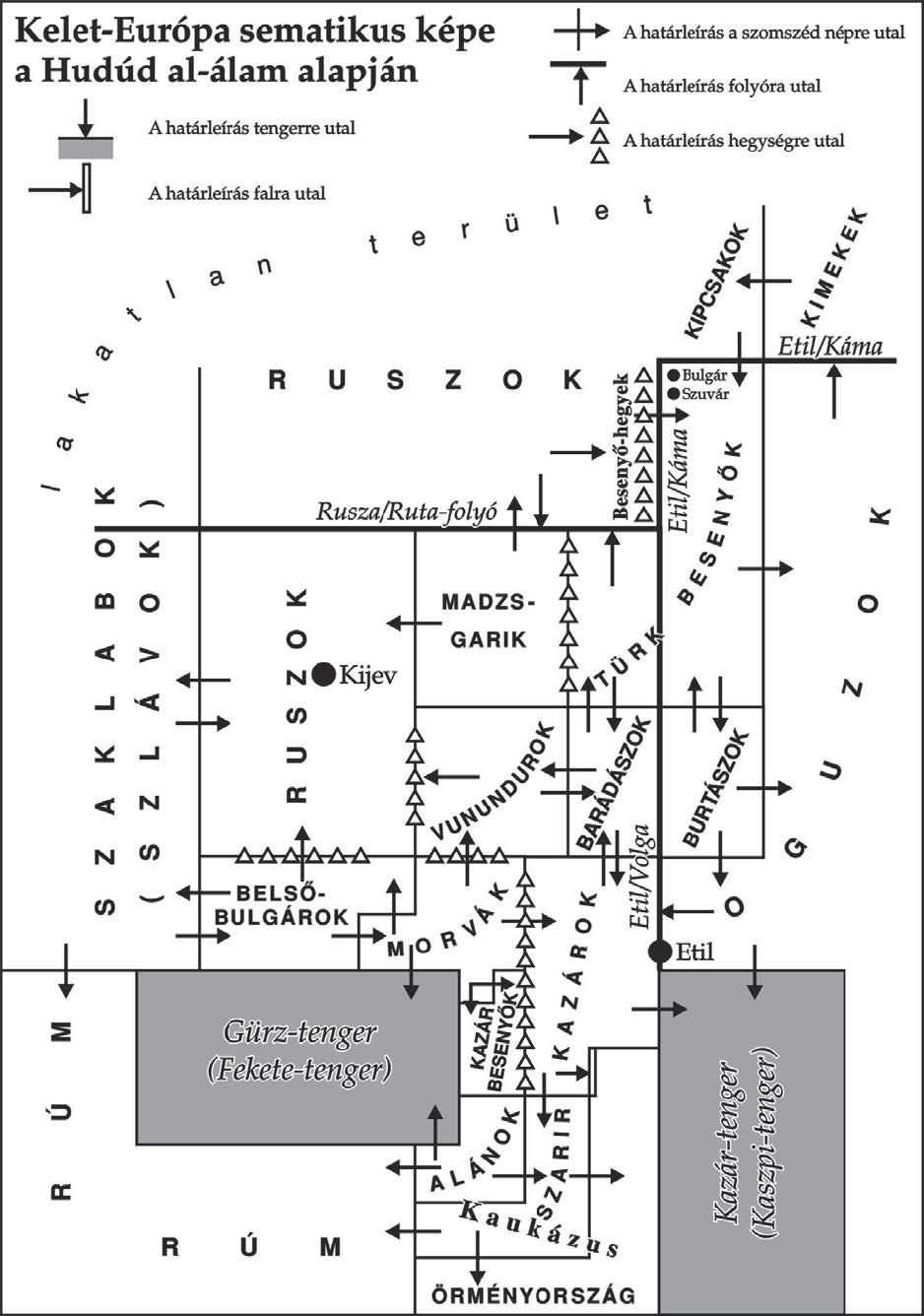REFERENCE TO THE PLACE OF RESIDENCE OF ANCIENT HUNGARIANS IN A PERSIAN GEOGRAPHICAL SOURCE (10TH C)
Keywords:
pechenegs, Eastern Magyars, Levedia, Volga Bulgaria, Kievan Rus, muslim geographical traditionAbstract
1The2 geography book “Hudud al-'Alam” was compiled by an unknown author in the territory of the contemporary Northern Afghanistan in 982-983. Evidently, it used to contain a map which is apparently missing in the only surviving manuscript. The center of this geographical description is Central Asia, which is described with most details, whereas the information on the more remote regions is rather scarce and inaccurate. One of the peripheral regions is Eastern Europe, which is nevertheless rather thoroughly described by the author: 15-16 out of 52 countries mentioned in the work are located in that region. An unknown author published the information about Eastern Europe classifi ed into three geographic groups: the Caucasus, Eastern Europe and Ethil (the Volga - Kama - Belaya rivers). The descriptions of territories located in the North-Western direction are much scarcer, although this is the area populated by the Magyars (Megyers). Due to the fact that “Hudud al-'Alam” features a description of the neighboring peoples, one can reconstruct a map which was presumably possessed by the author of the work. It clearly indicates that the place of residence of the Magyars in the period in question was located west of the Volga river and east of Rus, far to the north of the Black Sea. Thus, the information is diff erent from that provided in the works by Constantine VII Porphyrogennetos (on Etelköz), Ahmad ibn Rustah or Abu Sa'id Gardezi. It is evident that the author of “Hudud” did not mention the aspects of the nomadic life of the Magyars, which are vividly described in the aforesaid Arabic sources. This hypothetical map can be further compared with the actual geographical circumstances. Since the sources we possess are very scarce, the results cannot be unambiguous; nevertheless, the author is convinced that the place of residence of the Magyars can be the area between the Volga Upland and the great turn of the Oka river, mainly in the territory of the contemporary Republic of Mordovia. Which historical period is refl ected in the “Hudud”? As for Eastern Europe, it can be stated with confi dence that “Hudud” does not refl ect the ethnopolitical situation of circa 982/983, as it contains no reference to the Pechenegs on the northern Black Sea coast, who occupied the territory around 930. On the other hand, Rus occupies a rather important place in the text of the book. Thus, the geographical description of Eastern Europe most likely refl ects the situation in the early 10th century. Therefore, we can assume that the book mentions the Eastern group of the Magyars, and not the one which migrated to the Carpathian Basin.
References
-

Downloads
Published
How to Cite
Issue
Section
License
Copyright (c) 2018 Sudár Balázs

This work is licensed under a Creative Commons Attribution-NonCommercial 4.0 International License.







